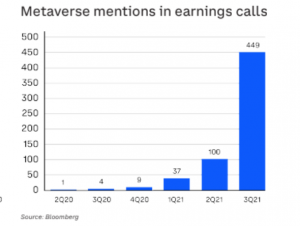I know, I know – we’re all sick of parties already. What a ghastly post-pandemic legacy for the UK’s Tory government. The staggering incompetence and corruption of this truth-free cabal will be swiftly judged by historians but today I’d rather focus on real talent and how we must be careful not to judge initiative too early. When recently watching the fascinating Apple TV+ documentary on the ‘60s band, The Velvet Underground, I couldn’t help thinking of the critical importance of timing, the sheer power of community experimentation and…….Web3. Let’s go back to 1967 and explain that thought progression further.
Firstly, timing is everything they say. Well, Lou Reed might concur given himself and his Velvet bandmates chose to release their eponymous debut album featuring ‘All Tomorrow’s Parties’ in March 1967. Legal snags caused delays and commercial distribution only happened in June which was the exact same time as the Beatles had released Sgt. Pepper’s Lonely Hearts Club Band. The ground-breaking droning sound of Reed and Cale was no match for the glamourous experimentation of Lennon and McCartney; two hugely innovative groups, but only one early winner.
The Velvet Underground album, with the famous Warhol-designed yellow banana sticker and instruction to “Peel slowly and see” on its cover, sold barely 30,000 copies in its early years. But here’s the community kicker…. the musical pioneering genius, Brian Eno, said in a 1982 interview that “everyone who bought one of those 30,000 copies started a band.” Arguably 30,000 music factories were born but there was one factory in particular which should resonate with the Web3 curious right now.
Andy Warhol was not only The Velvet Underground’s manager. His studio, “The Factory”, became the hip hangout venue for artists and musicians of the counterculture decade. Anyone from Salvador Dali to Mick Jagger to Truman Capote could show up as Warhol worked day and night producing experimental lithographs and paintings of everyday consumer items(Campbell’s Soup cans, Coke bottles etc), movies and music. By 2012, and a full 15 years after his unexpected death, Warhol’s work accounted for a whopping one-sixth of global contemporary art sales. While the financial world grapples with the surreal concept of digital images (NFTs) being worth millions of dollars it would be wise to recall the big Warhol ideas which were initially written off as drug-fueled madness. Try these for starters:
- Warhol assembled his community of “superstars” at the Factory, in many cases long before they were famous, and coined the prophetic epigram “In the future, everyone will be world-famous for 15 minutes.” Anyone thinking Twitter, TikTok or Instagram ‘influencers’ right now?
- Mass producing images of everyday items like cans and bottles earned Warhol millions to the consternation of traditional art experts. Anyone thinking Bored Ape Yacht Club or CryptoPunks?
- Warhol documented his life with an audio tape recorder and a Minox camera before social media and smartphones were invented. Now imagine what today’s digital natives will create with personal avatars and virtual worlds where they will spend the majority of their time. Anyone thinking Decentraland ?
The influence of Warhol and his Factory community on American and global pop culture has been enormous and I’m thinking the Web3 creative community is poised for even bigger impact despite current commentariat scepticism. It has been a tough few weeks for financial markets, technology stocks and cryptocurrencies but it would be a mistake to think that the pace of change will stall. What is striking in recent months is the increasing mention of the ‘metaverse’ in the quarterly earnings calls between companies and market analysts. This chart from Bloomberg captures the shift in curiosity rather well:

Only yesterday Microsoft CEO, Satya Nadella, stated that the metaverse “is the next wave of the internet”. He went even further saying “the next wave of the internet will be a more open world where people can build their own metaverse worlds”. Hmmm….mass consumerism meets mass creativity; building your own world, real estate, identity, clothing and art. Warhol would be intrigued but not too surprised. However, current mainstream thinking might not be ready just yet which means there will be opportunities for bold thinking. Some pretty big names are already making moves if the following headlines are any guide:
Brevan Howard’s Hedge Fund to Start Buying Cryptocurrencies – Bloomberg
Facebook and Instagram may help you create and sell NFTs – Engadget
Crypto Exchange BitMex to buy 268-year-old German Bank – FX Empire
Coinbase announces NFT marketplace partnership with Mastercard – Fortune
What is less obvious, as we view developments right now, is where people will ultimately hang out in the metaverse, what currency/token will be mass-adopted and which ‘identities’ they will use. Recall the Warhol ‘look’ – the hip clothes, wigs and self portraits – and his daily efforts to impose the image he wanted of himself on the world. Think of the metaverse world where many might feel they can look and feel better than in real life. That feels like a slightly unnerving future but there will be inspiration too. Indeed, The Velvet Underground in their short time together went on to become one of the most influential bands in rock history and are credited with inspiring the punk and new wave movements. So, once again there’s a good chance history will rhyme. The parties will probably be interesting too…
‘And what costume shall the poor girl wear
To all tomorrow’s parties
Why silks and linens of yesterday’s gowns
To all tomorrow’s parties’
All Tomorrow’s Parties – The Velvet Underground & Nico









